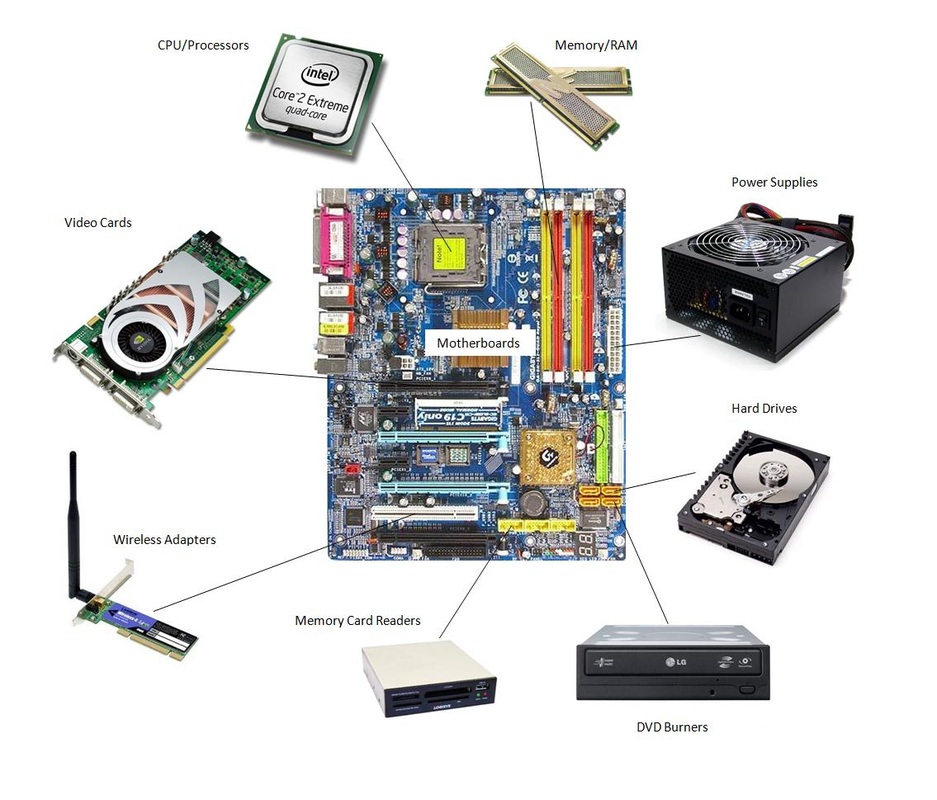In the current technology-focused environment, the interest in computer hardware is at an all-time high. Whether you're a DIY enthusiast, a relaxed gamer, or an IT professional, finding high-quality surplus computer parts can be a game-changer. Such parts deliver a budget-friendly solution for enhancing or repairing your system, but they present a chance to delve into the intricacies of computing. With a bit of knowledge and careful consideration, exploring the realm of surplus components can yield fantastic revelations and financial benefits.
On the other hand, buying surplus hardware demands keen observation and expertise. From identifying genuine products and ensuring they work with your present system, this guide intends to arm you with the essentials for a fruitful buying journey. web link will discover how to identify premium parts, what to seek in crucial hardware such as motherboards and power supplies, and strategies for uncovering the top deals in the market. If you are constructing a budget-friendly gaming setup or improving your professional workstation, understanding these key factors will help you make informed decisions while bypassing frequent errors as you proceed.
Key Factors To Keep in Mind Buying Extra Parts
When into the world of extra tech parts, the first thing to think about is the source of the items. It is important to buy from reliable vendors, whether they are online platforms, brick-and-mortar stores, or sales events. Researching the supplier’s reputation through ratings and testimonials can help you avoid potential pitfalls. Look for vendors that have explicit return policies and warranties, as these can offer reassurance about the condition of the components you are looking at.
Furthermore, it's important to check the condition and details of the extra items. Not all excess parts are created equal; some might be gently used, while others may have noticeable damage. Pay great attention to item details and images. For critical items like motherboards and central processing units, information about their past use, compatibility with existing systems, and future enhancements should be considered. Always check signs of damage, such as scorches on the circuit board or deficient features, which could indicate that the part is not a good buy.
Finally, assess the pricing and ensure you are receiving a fair deal on your money. The cost of surplus components can change significantly, so it is essential to compare comparable parts across multiple avenues. Be aware of potential hidden costs, such as shipping fees or import fees for global transactions. Using online tools can help in ensuring you choose wisely, ensuring you don’t spend excessively for components that may not meet your needs or requirements.
Methods to Recognize High-Quality Extra Parts
While shopping for surplus computer components, the initial step in assessing excellent parts is to research trusted sources. Look for suppliers with good reviews and a track record of honesty regarding the condition of their products. Well-known surplus suppliers and clearance companies frequently provide thorough descriptions and guarantees on their parts, making it simpler to determine quality before finalizing a buy. Moreover, online marketplaces that specialize in tech gear can give customer reviews that highlights reliable vendors.
A further crucial factor to take into account is the physical condition of the components. Examine for obvious indicators of usage, damage, or fixes. High-quality surplus parts generally show few marks or dents. Focus closely the connectors, pins, and interfaces, as these sections can indicate the history of usage and possible problems. Parts that are lacking corrosion and dust accumulation typically indicate superior care and durability. Additionally, when feasible, inquire about a testing report or confirmation of functionality, especially for important components like mother boards and processors.
Finally, get acquainted with the standards and types that are known for their durability and efficiency. Certain brands and series are acknowledged in the technology industry for their longevity or upgrade potential. Being aware of what to look for in a used graphics card, processor, or memory can aid you formulate educated decisions and prevent lower-quality options. By combining supplier reliability, physical inspection, and product investigation, you can successfully identify quality surplus computer parts that offer the greatest value for your purposes.
Enhancing Benefits from Excess PC Parts
To truly boost benefit from surplus PC parts, a comprehensive understanding of your project goals is crucial. Before committing to any purchases, clearly outline what you want to achieve with your upgrade or improvement. This will aid you avoid unnecessary expenses on components that might not fit your requirements. Concentrate on from this source and suitability, ensuring that the surplus parts you look at will work well with your existing setup. Studying specifications and checking out reviews can provide insights into which components will deliver the optimal performance for your financial plan.

One more critical factor is knowing where to purchase. Surplus computer parts can be found through various sources, such as local tech maintenance shops, online marketplaces, and sales. It's beneficial to visit online communities and community forums where other DIY enthusiasts share their stories and suggest trustworthy sellers. Building a circle can also lead you to unique deals and specialist tips on get high-quality parts at reduced prices, giving you an advantage in acquiring the best equipment.
Ultimately, to ensure the longevity of your surplus parts, put some work into proper maintenance and upgrades as needed. Regularly cleaning items, keeping an eye on performance metrics, and being mindful of the cooling system will help prolong the lifespan of your parts. By taking these forward-thinking steps, you can maximize both the performance and the value derived from surplus parts, experiencing contentment from your DIY projects while reducing money in the process.
